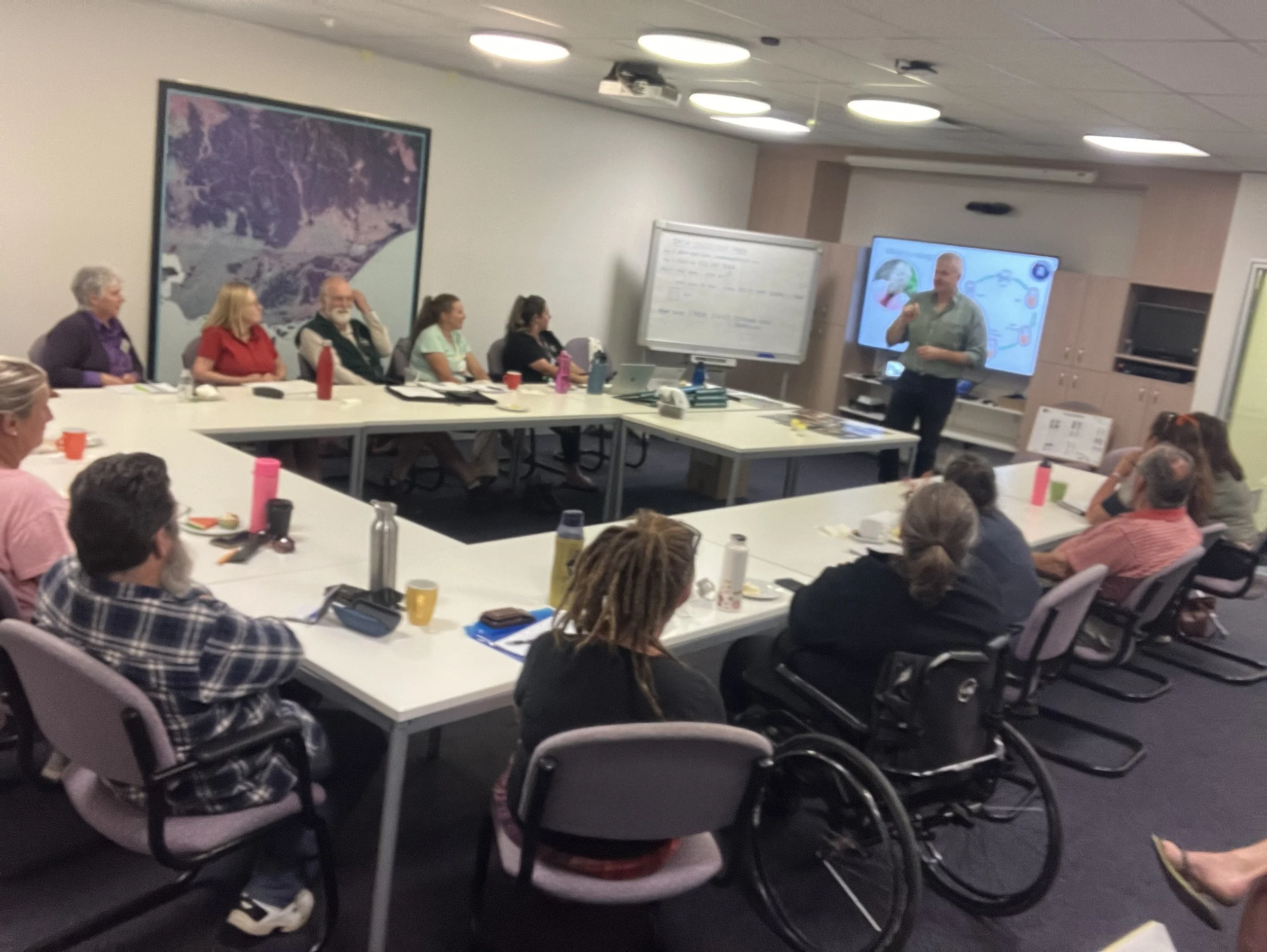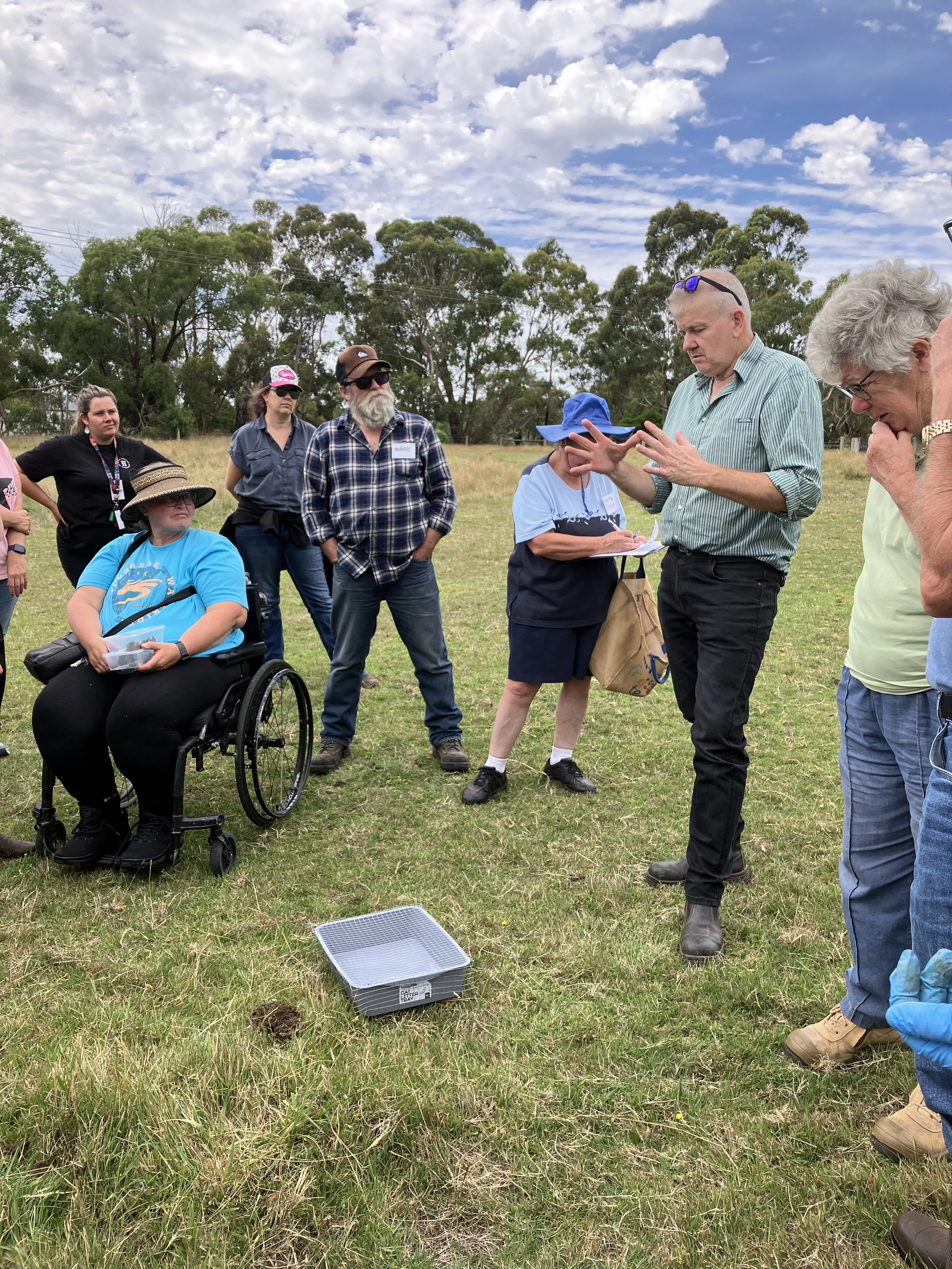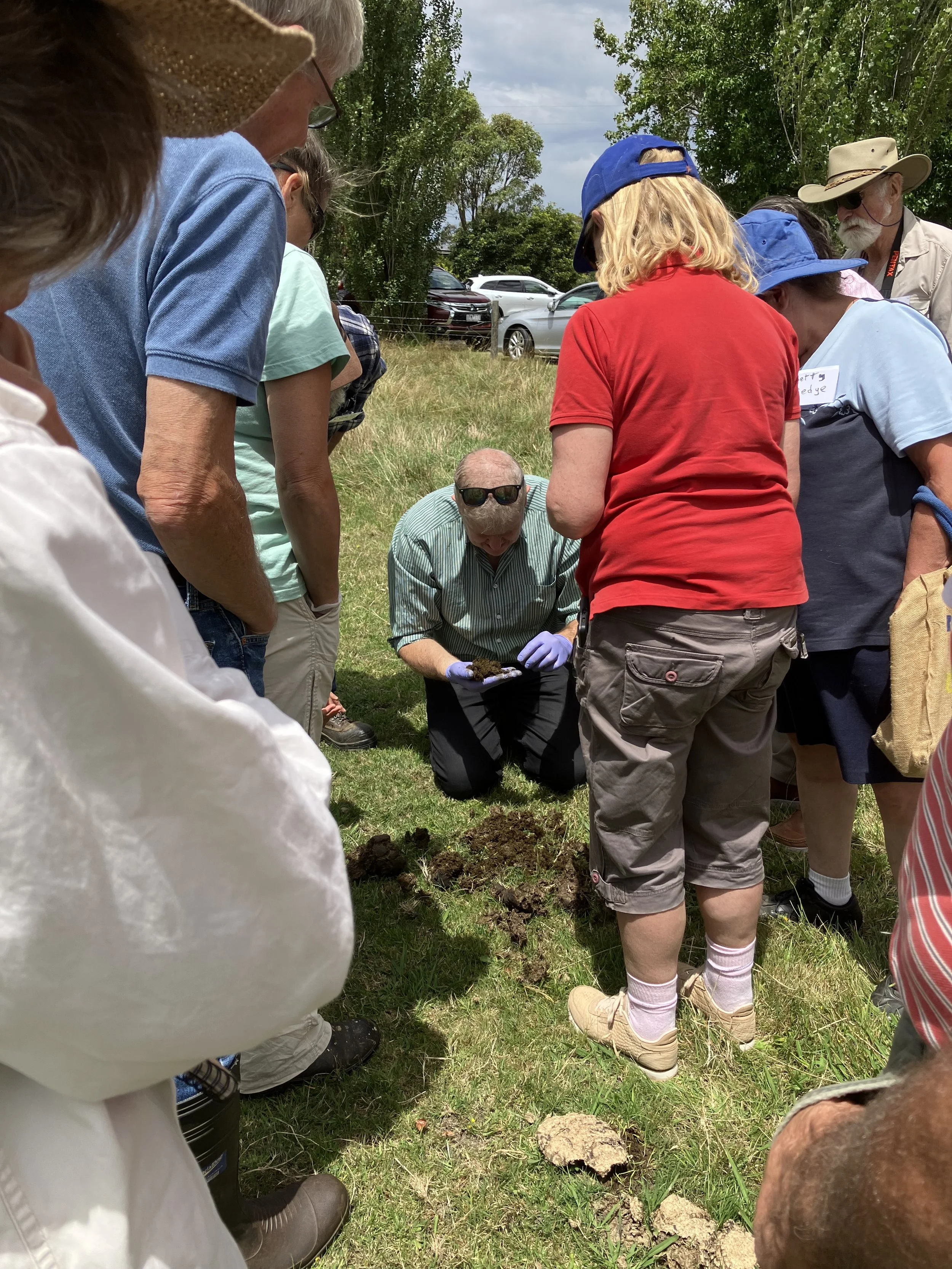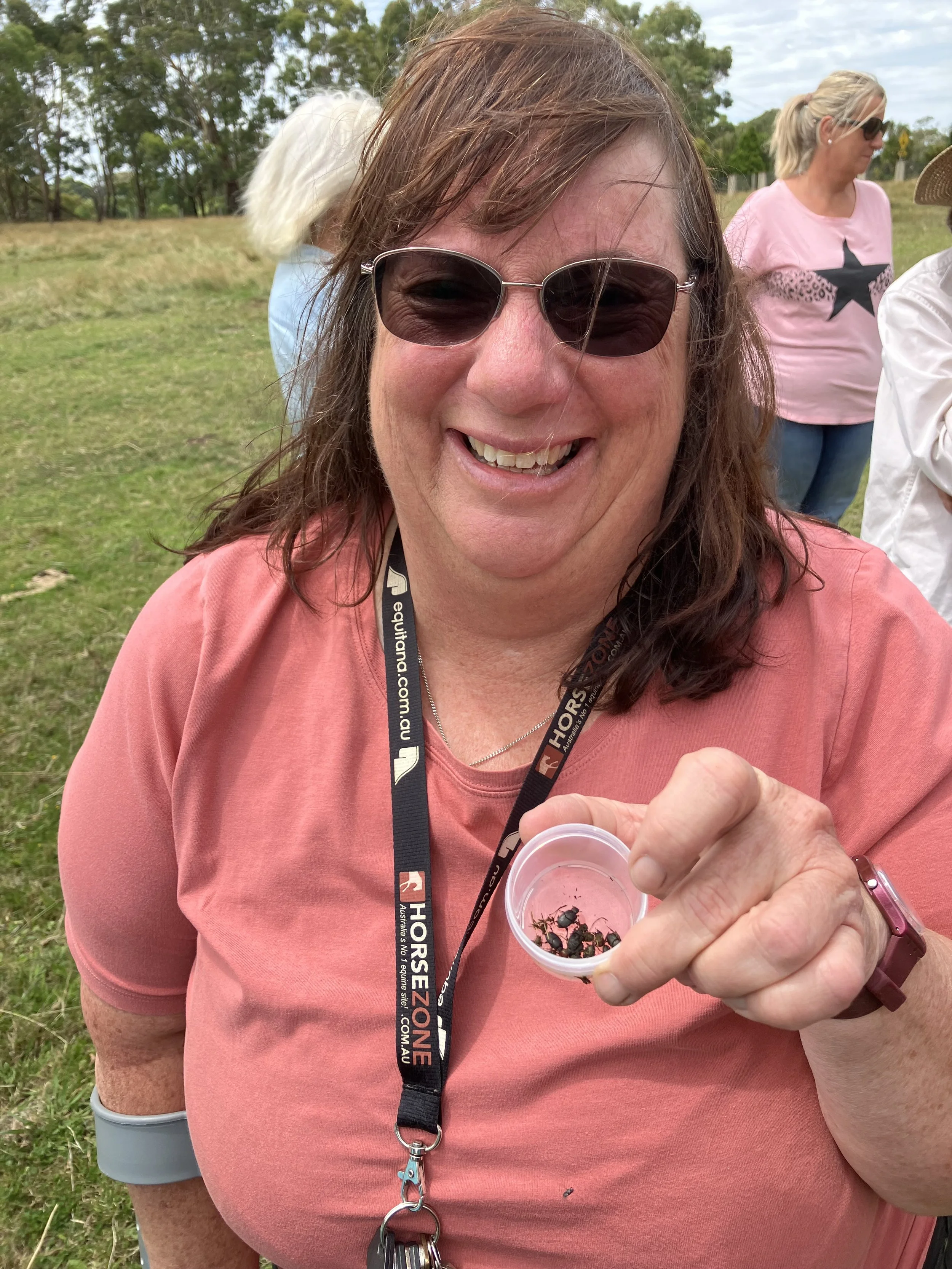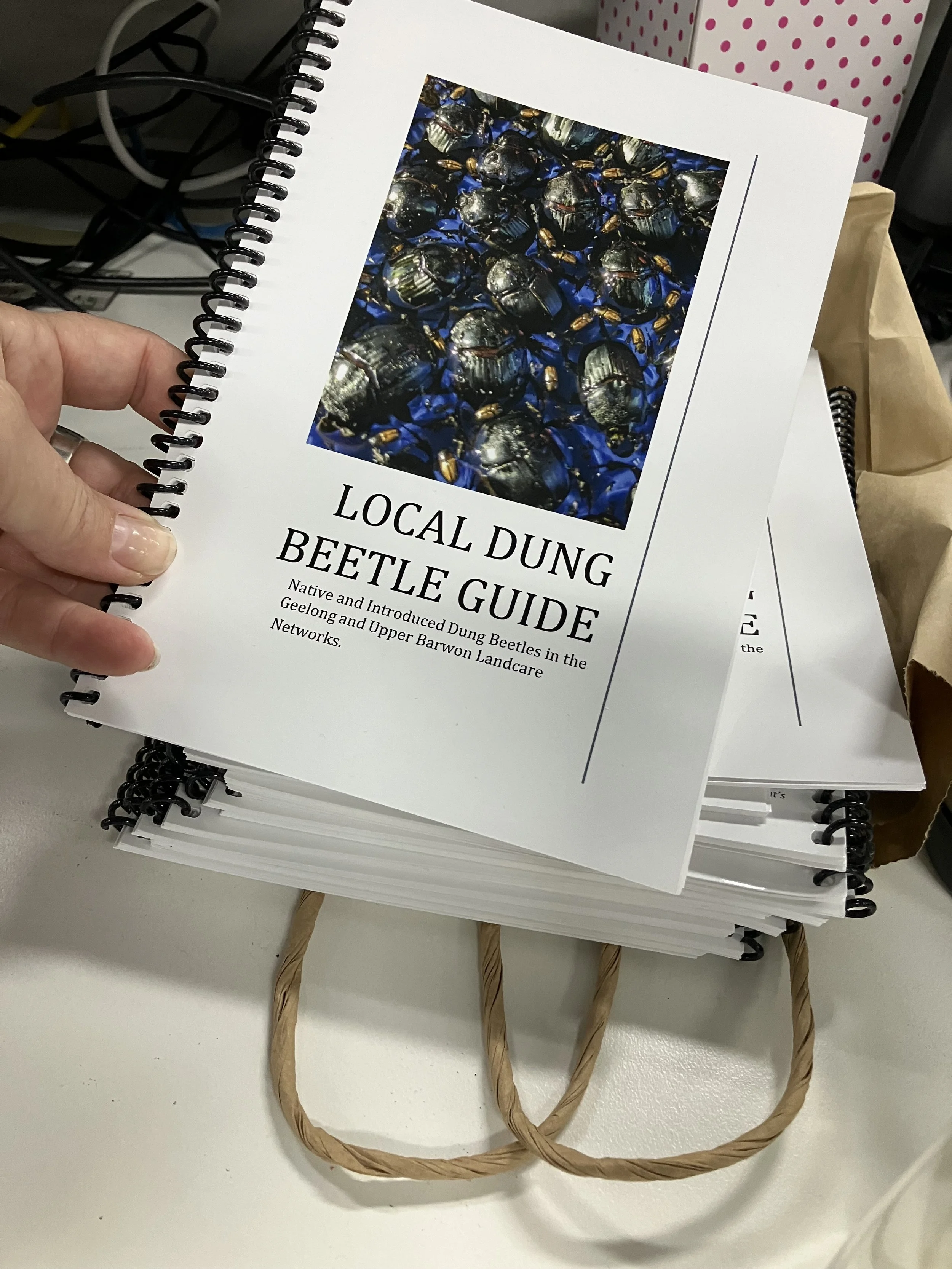
West Gippsland Dung Beetle Project
Latrobe Catchment Landcare in partnership with Maffra District Landcare are aiming to engage and involve community to increase their capacity to monitor and protect existing dung beetle populations in West Gippsland.
Dung beetles protect and improve soil by burying dung under and near dung pads. This improves soil aeration and moves the dung into the sub-soil providing plants with available nutrients. Most importantly, it prevents the dung’s high levels of nitrogen and phosphorus from washing into surface waters polluting dams, waterways and marine environments. There is a knowledge gap in what beetle species we have in our region, and where they occur.
This project aimed to directly address this, involving the community to increase their capacity to protect existing dung beetle populations, as well as exploring the option of a beetle exchange.
A beetle exchange involves swapping beetles of a species that are abundant in one location but uncommon in another (and vice versa). We still have an opportunity to visit the Cannibal Creek Landcare group who have a very successful beetle nursery and have organised for a number of species to be given to participating farmers.
There is strong interest in dung beetles amongst Landcare members in both MDLN and LCLN area. This project invited landholders to participate in a 12-month citizen science dung beetle monitoring program. All monitoring was to be undertaken by community participants, with support from Landcare Network staff and dung beetle experts, Dr Russ Barrow from Dung Beetle Ecosystem Service.
We held a one day workshop with interested participants where Dr Russ taught us all about the lifecycles and different types of dung beetles in our area. We then gave our citizen scientists their own monitoring kit and headed out to a local property to see what we could find …
The outcome of this project has been interesting … all 18 participants who attended the workshop were given monitoring kits and assisted on the day to log into the online platform LCLN were using to record and gather data. Participants were given the option to record their findings manually (not digitally) but no one opted for this.
In the weeks and months after the event, follow up emails were sent between the participants, Landcare facilitators and Dr Russ for assistance with identification of beetle species. There were delays at times and we think this lead to the participants unfortunately losing interest.
If anyone is still interested in monitoring Dung Beetles on their property and obtaining some beetle species from a dedicated dung beetle nursery, please get in touch. We have obtained a number of Local Dung Beetle Guidebooks and have engaged with the Western Port Catchment Landcare Network to deliver component of their ‘More than Manure’ Dung Beetle Monitoring Program.



